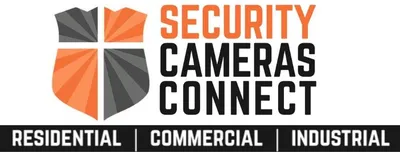Installing a security camera is one of the best ways to protect your home or business from theft and vandalism. With advancements in technology, modern security cameras are easier to install and come with various features like motion detection, night vision, and remote monitoring. This guide will walk you through the step-by-step process of how to install a security camera, ensuring maximum efficiency and coverage.
Choosing the Right Security Camera
Before you begin the security camera installation, you need to select the right security camera that fits your needs. There are different types of security cameras available, including wired cameras that require a power source and data cables, wireless cameras that operate using Wi-Fi and are easy to install, indoor cameras ideal for monitoring inside your home or office, outdoor cameras built to withstand weather conditions and provide external surveillance, and smart cameras that integrate with apps and smart home devices.
Finding the Best Location for Your Camera
Choosing the right placement is crucial for effective surveillance. The best places to install security cameras include entry points like doors, windows, and garages; high vantage points at least 8-10 feet high to avoid tampering; areas with wide coverage to eliminate blind spots; and locations with adequate lighting or night vision support.
Gathering the Necessary Tools
For a smooth installation process, have tools like a drill and screwdriver, mounting brackets, power cables if using wired cameras, network cables for wired systems, a ladder, and a smartphone or monitor for testing.
Installing the Camera Mount
Once you’ve chosen the location, mark the drilling spots using the camera mount, drill holes and insert wall anchors if necessary, attach the mounting bracket with screws, and then secure the camera onto the bracket.
Connecting the Camera to Power and Network
Depending on the type of camera, the connection process varies. For wired cameras, connect the power and data cables, run cables through walls or ceilings to keep them hidden, and plug them into a DVR/NVR system for recording. For wireless cameras, connect to the Wi-Fi network using the camera’s mobile app, ensure the signal strength is strong for uninterrupted streaming, and insert batteries if required or connect to a power source.
Adjusting Camera Angles for the Best View
After mounting and connecting, adjust the camera to get the best view. Ensure it covers the intended area without obstructions; tilt or rotate to minimize glare from lights or reflections; and test with a live feed to confirm the best angle.
Setting Up Storage and Recording Options
To save footage for future review, configure your storage options. You can choose cloud storage for remote access and automatic backups, local storage using SD cards or external hard drives, or a DVR/NVR system for continuous footage recording of multiple cameras.
Connecting to a Monitoring Device
Most modern security cameras allow remote monitoring. To set this up, download the camera’s mobile app, connect to your Wi-Fi network, configure notifications for motion alerts, and test live streaming and playback features.
Testing the System Before Finalizing
Before finalizing the installation, conduct a full system test. Check video quality and angle adjustments, test night vision and motion detection, ensure alerts and notifications work properly, and verify remote access from your smartphone or computer.
Maintaining Your Security Camera for Longevity
Regular maintenance ensures the camera functions efficiently. Clean the lens periodically to prevent dust and smudges, check power connections and batteries, update firmware to improve security and performance, and review recorded footage to check for any suspicious activity.
Frequently Asked Questions
Do I Need a Professional to Install a Security Camera?
No, many modern security cameras are designed for easy DIY installation. However, if you are installing a complex wired system, professional help may be beneficial.
Can I Install Security Cameras Without Wi-Fi?
Yes, you can use wired security cameras or models with local storage like SD cards and DVR/NVR systems that don’t rely on Wi-Fi.
How High Should I Mount My Security Camera?
For outdoor cameras, mount them at least 8-10 feet high to prevent tampering. Indoor cameras should be placed at a height that covers the most vulnerable areas.
What Is the Best Location for a Security Camera?
Ideal locations include front and back doors, garage areas, windows, and high-traffic areas inside your home. Avoid placing them in direct sunlight or hidden behind obstacles.
How Do I Protect My Security Camera from Hacking?
To prevent hacking, use strong passwords, enable two-factor authentication, update firmware regularly, and avoid sharing your camera’s access credentials.
Conclusion
Installing a security camera is an effective way to enhance security and monitor your property. By following these steps, you can successfully set up a surveillance system that provides peace of mind. Whether you choose wired, wireless, or smart security cameras, proper placement and maintenance will ensure optimal performance. Start today and take control of your security!
By following these guidelines, your security camera will be up and running in no time, keeping your home or business safe from potential threats.
